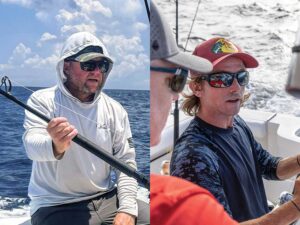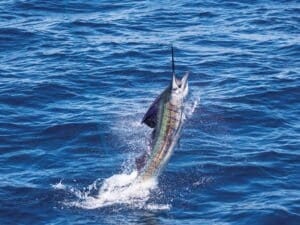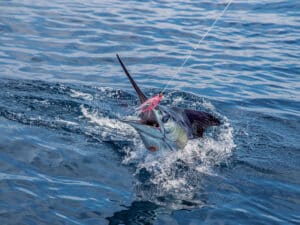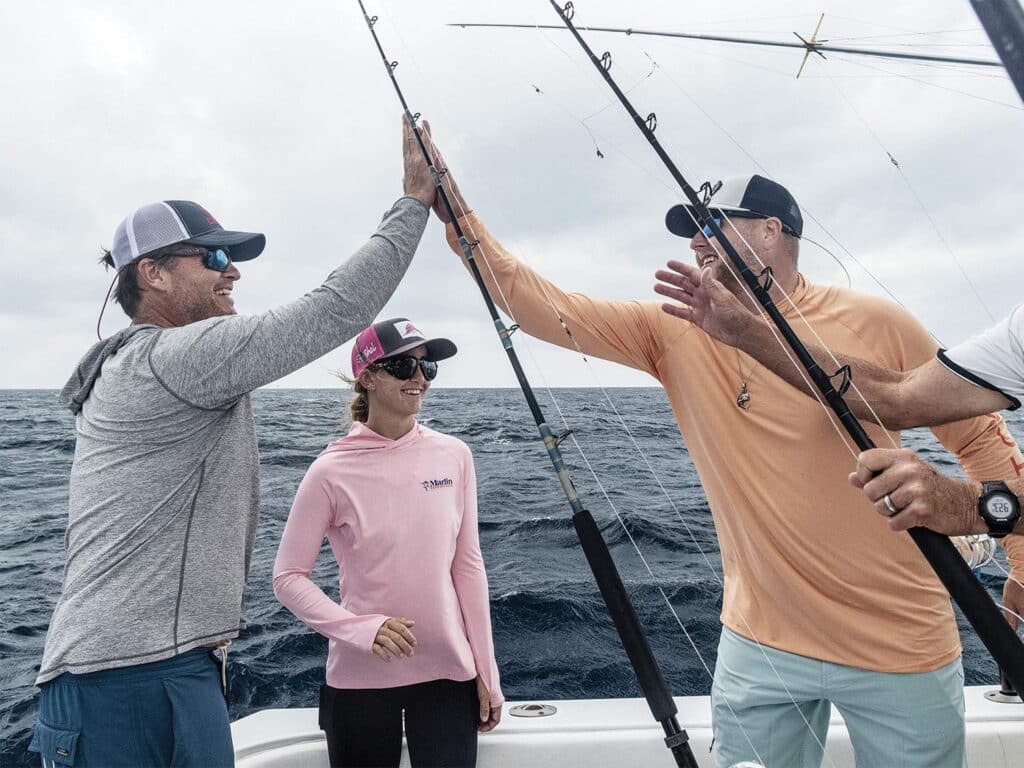
Marlin University is now Marlin Expeditions! We travel to the best big-game destinations on Earth, at peak times of the year, and teach the most cutting-edge techniques to catch billfish. Check out our 2025 expeditions.
After every trip, we send out a survey asking the participants to give us some feedback on areas such as the boats, the accommodations, the food, and most importantly the service and quality of the instruction. For the most part, every review is glowing, with the clients taking the time to let us know how much they appreciate the effort we put into training the next generation of fishermen. But every once in a while, there’s a hiccup. As my brain constantly searches for what can make Marlin Expeditions better, I thought I’d go back and look at older surveys, focusing on those that weren’t five-star.
As I dove headfirst down a rabbit hole of years and years of surveys, one in particular caught my attention: A client had surmised that whoever got to the rod first got to fight the fish and that only the more experienced members of his team caught more fish because they were faster on the rod than he was. Finally, he thought the instructors should have been more proactive to be sure everyone got to catch. I thought to myself, “Where did we go wrong?”
As I wondered what the circumstances were behind this trip, I pushed it aside. It didn’t matter. What mattered was that I figured out what to do about it. The moral of this column is to make this point and this point only: If you want to get better at fishing, hold your rod, pay attention, and understand that fishing is a team sport. It all happens fast, so if you want to catch, you must be fully engaged.
Hold Your Rod
I certainly don’t claim to know everything, but if there’s one thing I know about circle-hook dead-baiting, it’s that you must hold your rod and pay attention. Beating the fish to the clip is the only way to have a legitimate shot at catching it. You’re already behind the eight ball; if he grabs it and you’re not ready, your chances of hooking it are easily just split in half. I get it: It’s miserably hot, your thumb is tired, sweat is dripping in your eyes, and the heat only makes you sleepy. And when you’re on the long rigger—the most difficult bite in sport fishing—it can almost seem unbearable.
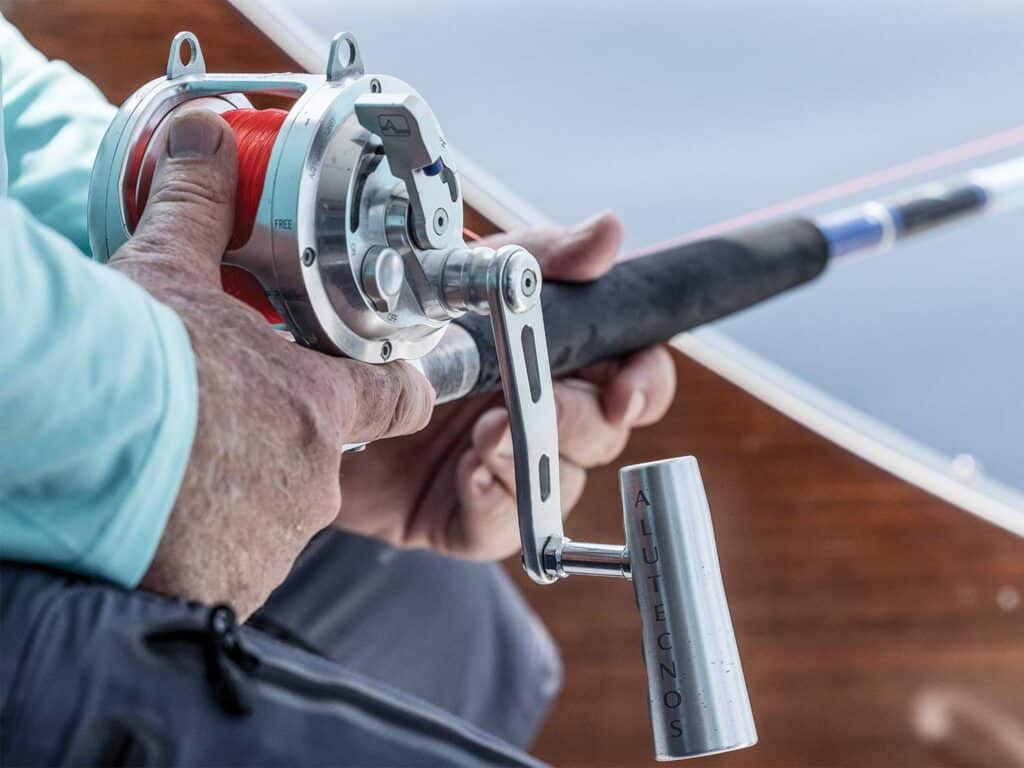
I also get that our clients are on vacation, even if it’s a working one. If you signed up, then you must have been at least half interested in becoming a better angler. This is where communication on both sides is key. Now, I’m pretty good at reading the room. I’ve fished a long time with many types of anglers, and I can recognize when one isn’t that into it. I can also recognize when someone needs a break. And when one or both of those are true, I happily hold the rod in your place and then pass it to a crewmember if and when another student gets a bite so I can walk them through it, or just be there in case I’m needed.
If you set your rod down and wait for the rod to bend over, or for the fish to pop the clip, you better be prepared to say bye-bye to that opportunity. No matter how fast you are, you’ll never be faster than a sailfish swimming upwards of 70 mph in pursuit of a snack. And the chance that you see that fish coming that far away before you feel anything is close to zero.
Know Where Your Bait Is
While you’re trying not to pass out from the equatorial heat, you must know where your bait is at all times. Why? Because billfish are so fast that sometimes just a small splash—or a wake, or a disturbance of any kind on the surface—near your bait might clue you in on what’s about to happen. Again, the chances of you ever seeing a fish on the long rigger, especially, is why watching the area around your bait is so important.
If you’re on the flat line, your job is to watch the teaser(s). During the lulls between bites, it’s very easy to get hypnotized by the methodical nature of the teaser and the hum of the engines, but you must be looking where the fish is likely to show himself. It’s not in front of the teaser where all the ruckus is coming from, but instead, it will be behind it. In the case where you’re pulling a squid chain with a chase bait, you want to be sure your focus is behind the chase bait. This is where you will recognize an opportunity. Fish will sometimes stalk their prey, watching it to determine if it’s safe to eat or if it’s even catchable. And if and/or when they make a move on a teaser, it’s going to be noticeable; that is, if you’re looking for it.
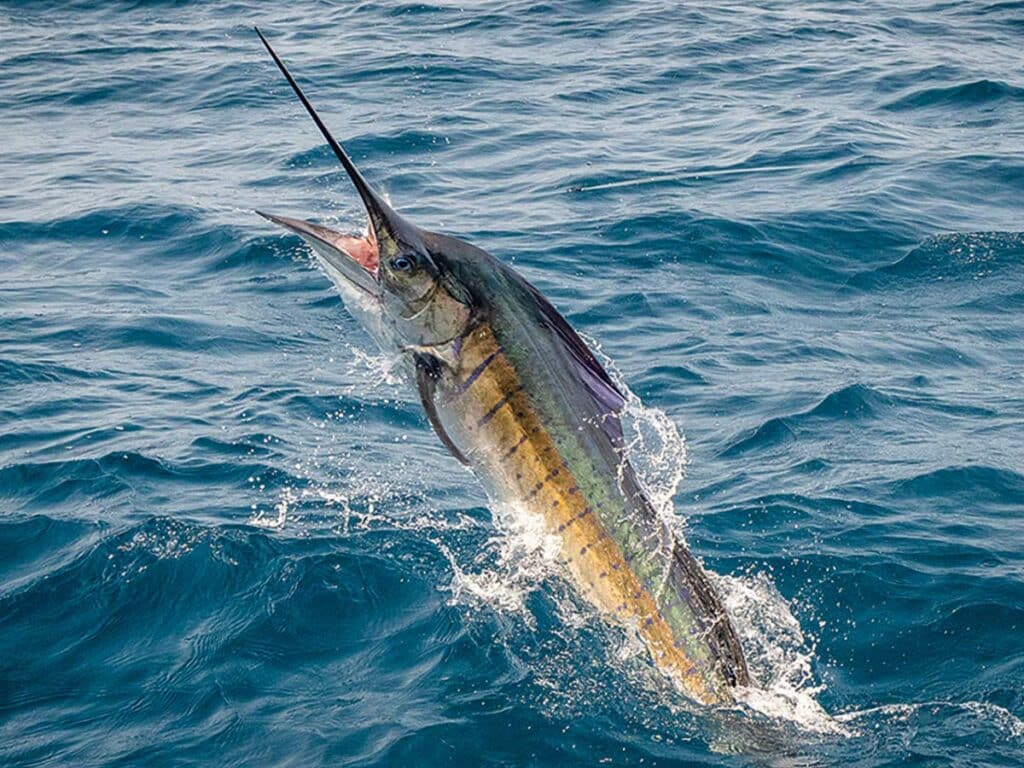
As the fish rises up on the teaser, you’ll be looking for, at a minimum, two things. The first is a dorsal fin breaking the surface, or a bill. Sailfish are a little less noticeable because if the dorsal fin does surface, you’re likely only going to see a small black triangle. On the other hand, a marlin’s dorsal fin is much stiffer, so it’s going to hold up when it breaks the surface. Secondly, you’ll see the bill break the surface. Anytime you can see the fish before he makes his move, the more likely you are to hook it. And sometimes a good eye for seeing fish comes from seeing them over and over again. That’s why the captain and mates see fish on the teaser more than any of the anglers do.
Learn More: Interested in learning more about Marlin Expeditions?
Fishing Is a Team Sport
Unless you are confined to the deck of a bass boat, fishing is a team sport. Offshore fishing, especially dead-baiting, requires that everyone on deck be completely engaged. You wouldn’t send only eight players on the baseball field. You’d send nine. And you certainly wouldn’t dare play the game without a shortstop or an outfielder. The point is this: Each team member is just as important as the next. And even though your performance adds to the success of the team, the team is what’s the most important. I often say that the long rigger is the outfield position and the flat line is the shortstop position. When a fish is in the spread, it’s like the batter is at home plate. Before the batter even makes contact, every team member must be ready. If the ball rolls between the shortstop’s legs (the angler misses the fish on the flat-line bite), then the long rigger—the outfielder—must be ready to make the catch. It’s the cleanup position, if you will. You usually get only one shot at a fish in the spread. If you’re lucky, you’ll get two, but that’s it, so taking advantage of every opportunity is the goal.
And while I constantly grapple with the truism that you can’t please everyone all of the time, I can offer up as many anecdotes as I can to drive these points home to participating anglers. After all, if fishing were easy, everyone would be doing it, right?
